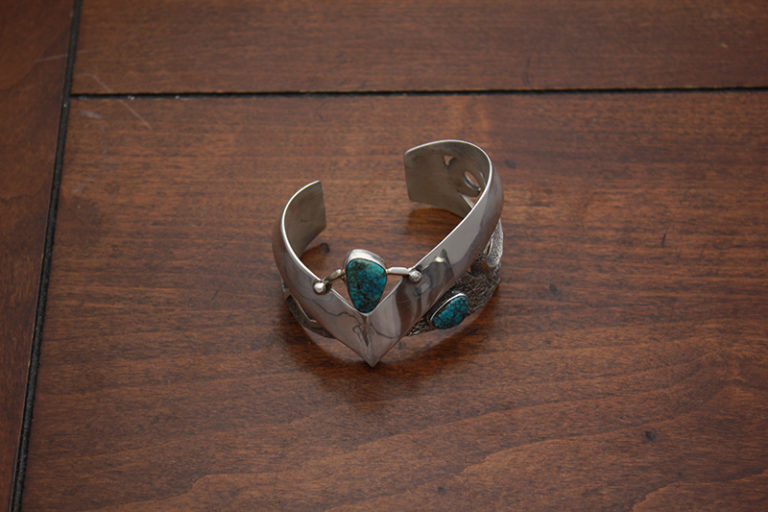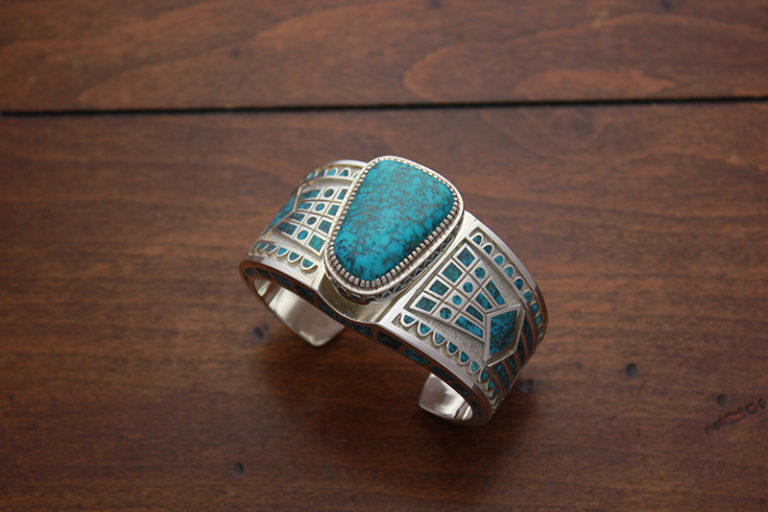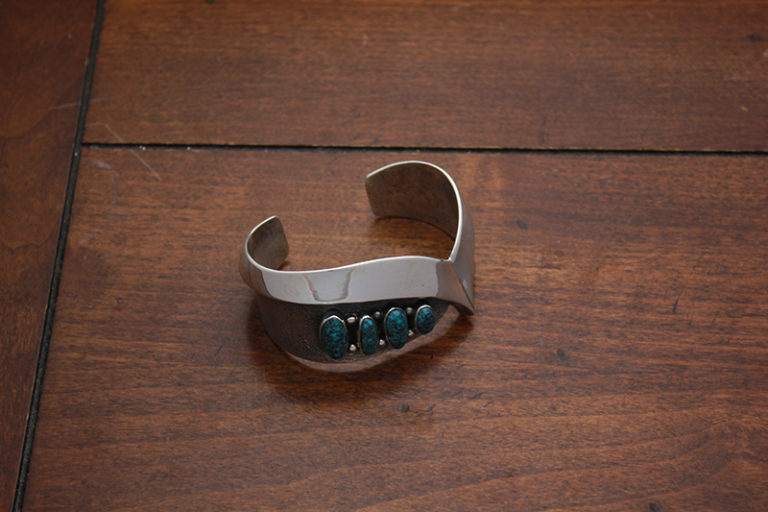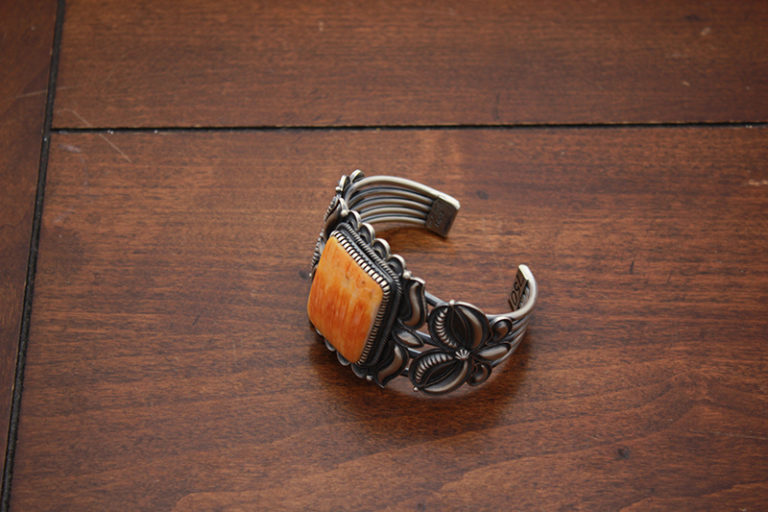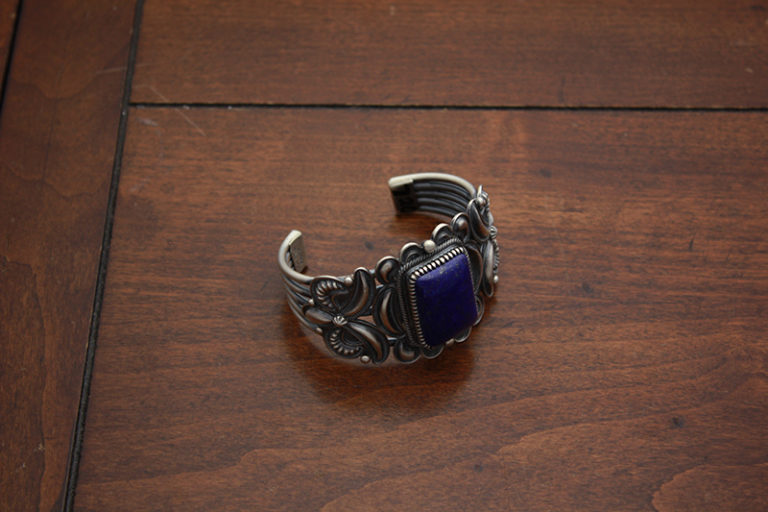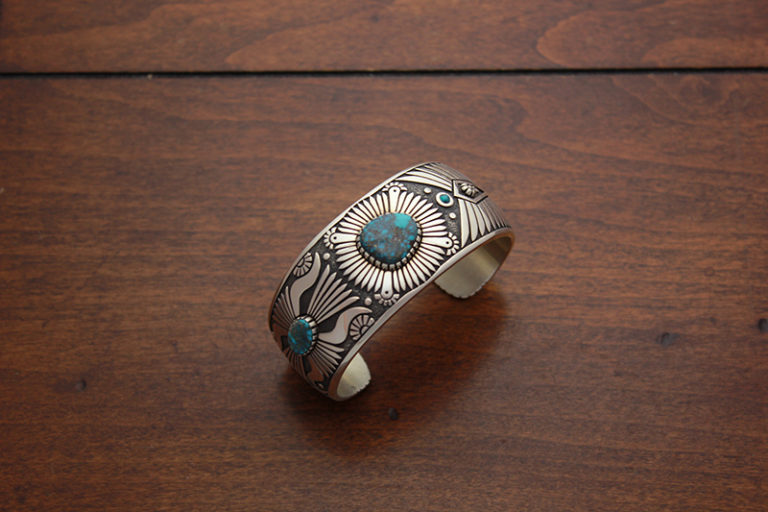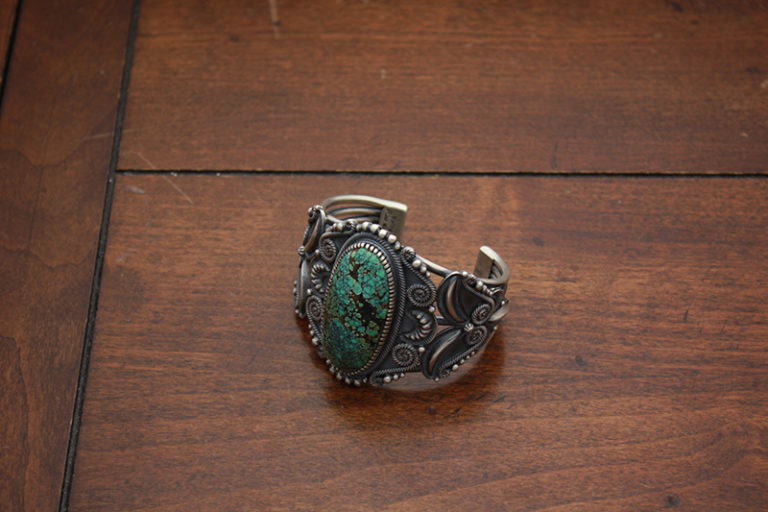Turquoise
Turquoise is an opaque, blue to green mineral that is a hydrated phosphate of copper and aluminum. It is formed by the percolation of meteoric water (precipitation) or groundwater through aluminous rock in the presence of copper. It often forms in arid regions on aluminous igneous or sedimentary rocks as vein deposits.
Turquoise, in its natural state, will range from a light sky blue to a deep emerald green. The spectrum of the color depends on the aluminum, iron, or zinc content. Aluminum makes the stone blue, iron makes the stone green, and zinc will add a yellowish hue.
Turquoise is identified and named after the mine from which it comes. At Lone Mountain Turquoise Company, we carry turquoise from over 30 domestic mines as well as mines from all over the world. Here are a few examples of domestic turquoise names and the mines that they come from.
- Lone Mountain turquoise comes from the Lone Mountain mine in Nevada
- Kingman turquoise comes from the Kingman mine in Arizona
- Bisbee turquoise comes from the Bisbee mine in Arizona
- Villa Grove turquoise comes from the Villa Grove mine in Colorado
In the United States, turquoise was originally mined using the “Room and Pillar” method, which was also the predominant method used to mine coal. A miner would enter the mine through an adit (opening) and hand mine for turquoise underground, leaving pillars of rock to keep the mine shafts from collapsing.
M.C. Winfield was the first turquoise miner to utilize Open Pit mining for turquoise. He would collapse the tunnels that were created by previous miners using a Caterpillar bulldozer. M.C. would then start back down, removing material layer by layer, forming a small open-pit mine.
A fun fact: Turquoise is one of only three materials in which a color is associated with its name. The other two are gold and silver.
Have a question about turquoise? Ask us here lonemountaininfo@gmail.com

